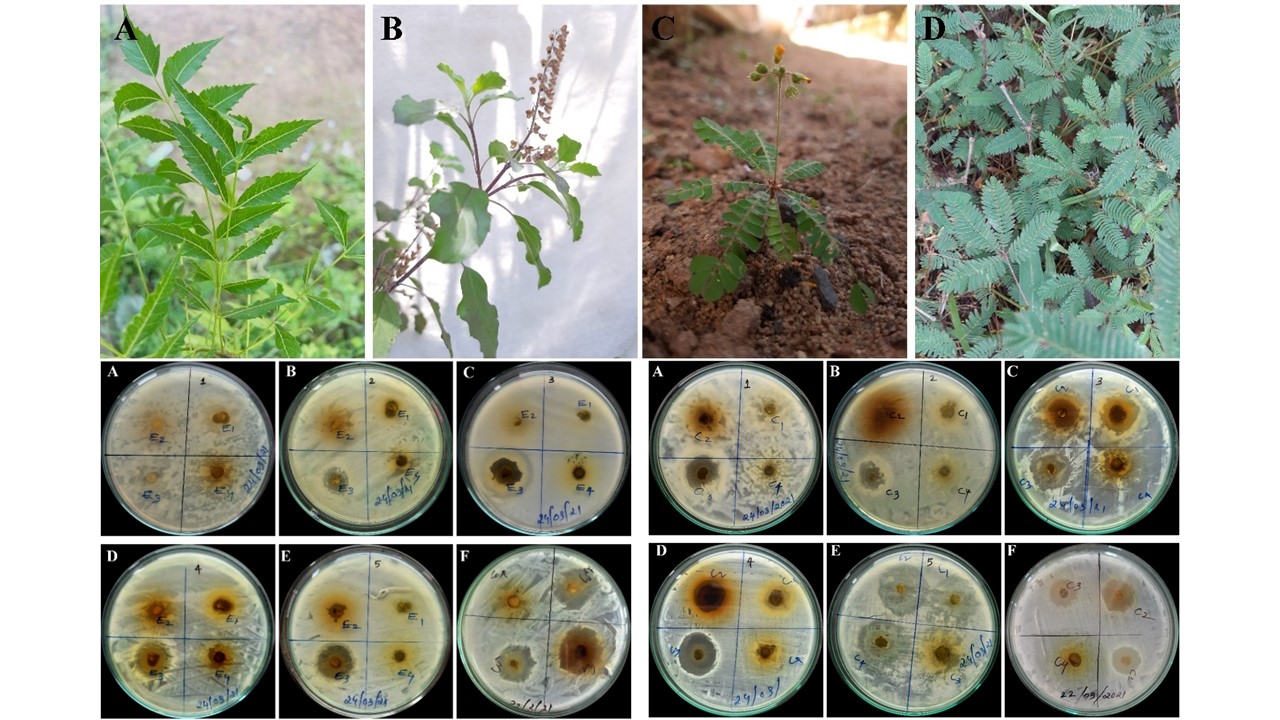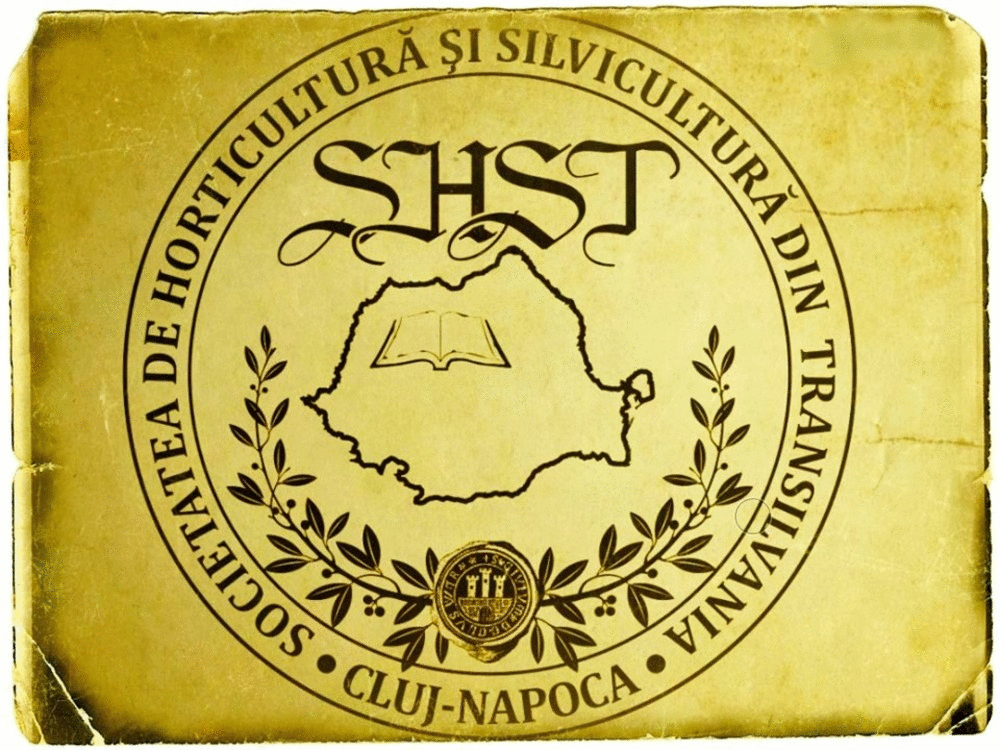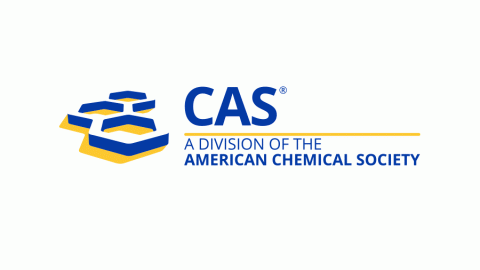Analysis of the antibacterial potentials of the leaf extracts of selected medicinal plants against pathogenic bacterial strains
DOI:
https://doi.org/10.55779/nsb15311575Keywords:
Antibacterial, antibiotics, opportunistic, resistance, susceptibilityAbstract
Medicinal plants render herbal remedies for human ailments and hence prevail over traditional healthcare practices. This study has analysed the antibacterial potential of the leaf extracts of four selected medicinal plants namely, Azadirachta indica, Ocimum tenuiflorum, Biophytum sensitivum, and Mimosa pudica, using Kirby-Bauer’s disc diffusion method. Six bacterial species, namely Escherichia coli, Pseudomonas aeruginosa, Acinetobacter baumannii, Bacillus megaterium, Bacillus subtilis, and Brevibacillus choshinensis were used to assess the growth inhibitory potentials of the aqueous and ethanolic extracts of the selected plant leaves. The study revealed that the leaf extract of B. sensitivum had the most pronounced antibacterial potential, followed by A. indica and O. tenuiflorum. The least inhibitory potential was showed by the extracts of M. pudica. The findings of the investigation state that the aqueous extract had more consistent antibacterial activity than the ethanolic extracts, confirming that the antibacterial agents present in these leaf extracts are hydrophilic in nature. In terms of growth inhibition, the susceptibility of the pathogenic, virulent strains of bacteria toward these extracts was found comparatively lower than that of the non-virulent, environmental bacteria. With the aqueous extracts, A. baumannii was found to be the most susceptible bacterial species while E. coli was the most resistant. With the ethanolic extracts, E. coli was found to be the most susceptible and B. subtilis the least. The current study supports the usage of the screened medicinal plants in alternative medical practices, as a measure to avoid opportunistic infections by environmental bacteria.
Metrics
References
Bharati, A. C., &Sahu, A. N. (2012). Ethnobotany, phytochemistry and pharmacology of Biophytumsensitivum DC. Pharmacognosy reviews, 6(11), 68.
Finlay, B. B., & Falkow, S. (1997). Common themes in microbial pathogenicity revisited. Microbiology and molecular biology reviews, 61(2), 136-169.
Heinrich, M., J. Barnes, S. Gibbons and E.M. Williamson, 2004. Fundamentals of Pharmacognosy and Phytotherapy. Churchill Livingstone, Edinbrugh, pp: 245-252.
Howard, A., O’Donoghue, M., Feeney, A., &Sleator, R. D. (2012). Acinetobacter baumannii: an emerging opportunistic pathogen. Virulence, 3(3), 243-250.
Kovács, Á. T. (2019).Bacillus subtilis. Trends in microbiology, 27(8), 724-725.Nath, K.,Talukdar, A. D., Bhattacharya, M. K., Bhowmik, D.,Chetri, S.,Choudhury, D., &Bhattacharjee, A. (2018). Antibacterial activity of certain ferns against multi drug resistant organisms. Journal of 10
Natural Remedies, 17(4), 144-153.
Ongsakul, M., Jindarat, A., &Rojanawrarit, C. (2009). Antibacterial effect of crude alcoholic and aqueous extracts of six medicinal plants against Staphylococcus aureus and Escherichia coli. Journal of Health Research, 23(3), 153-156.
PerumalSamy, R., &Gopalakrishnakone, P. (2010). Therapeutic potential of plants as anti-microbials for drug discovery. Evidence-based complementary and alternative medicine, 7(3), 283-294.
Pretorius, C. J., & Watt, E. (2001). Purification and identification of active components of Carpobrotus edulis L. J. Ethnopharm, 76, 87-91.
Sukanya, S. L., Sudisha, J., Hariprasad, P., Niranjana, S. R., Prakash, H. S., & amp;Fathima, S. K. (2009). Antimicrobial activity of leaf extracts of Indian medicinal plants against clinical and phytopathogenic bacteria. African journal of biotechnology, 8(23).
Wink, M. (2015). Modes of action of herbal medicines and plant secondary
metabolites. Medicines, 2(3), 251-286.

Downloads
Published
How to Cite
Issue
Section
License
Copyright (c) 2023 Sneha ASHA, Devi RADHAKRISHNAN RADHAMONI

This work is licensed under a Creative Commons Attribution 4.0 International License.
Papers published in Notulae Scientia Biologicae are Open-Access, distributed under the terms and conditions of the Creative Commons Attribution License.
© Articles by the authors; licensee SMTCT, Cluj-Napoca, Romania. The journal allows the author(s) to hold the copyright/to retain publishing rights without restriction.
License:
Open Access Journal - the journal offers free, immediate, and unrestricted access to peer-reviewed research and scholarly work, due SMTCT supports to increase the visibility, accessibility and reputation of the researchers, regardless of geography and their budgets. Users are allowed to read, download, copy, distribute, print, search, or link to the full texts of the articles, or use them for any other lawful purpose, without asking prior permission from the publisher or the author.













.png)















